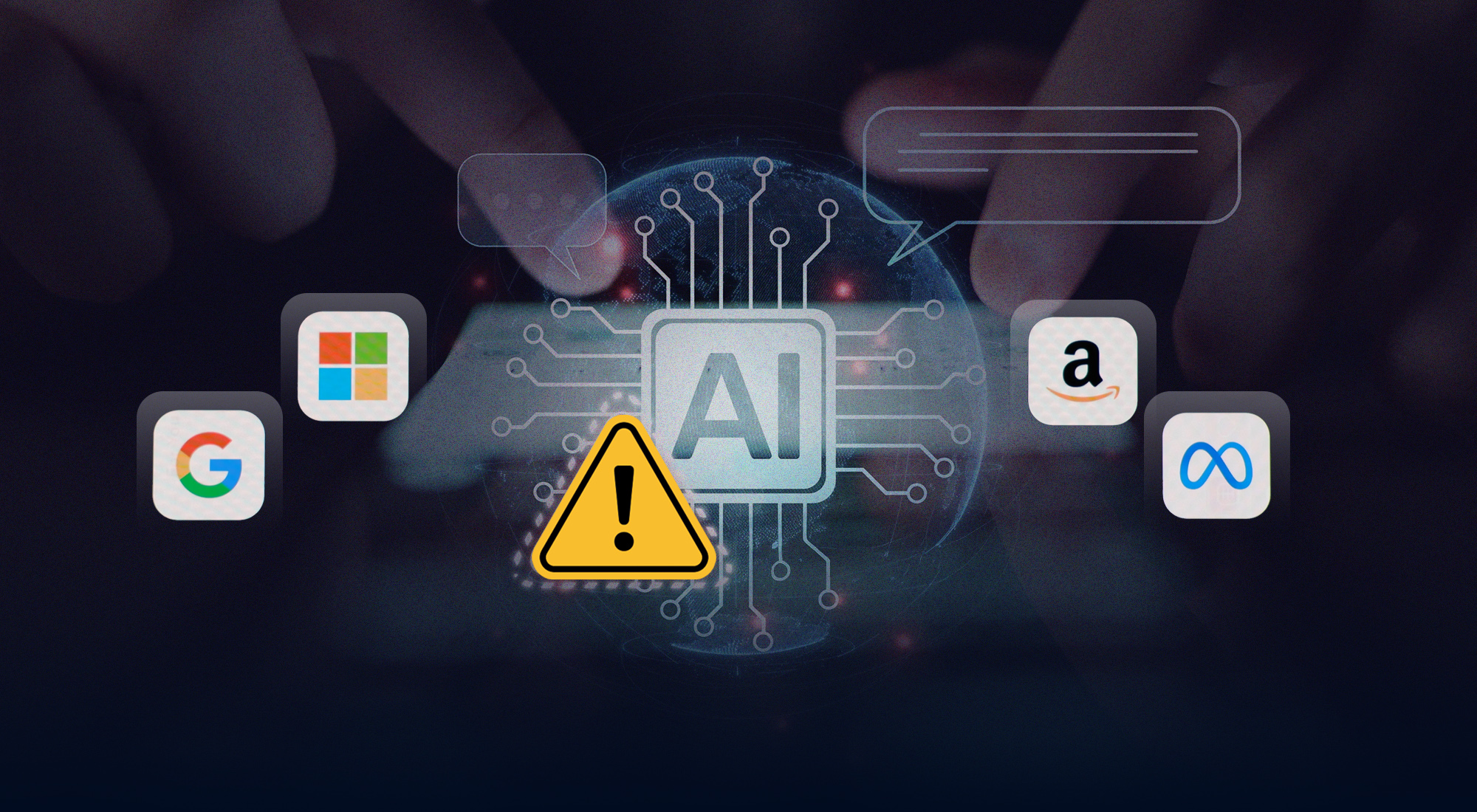In recent years, the rapid proliferation of artificial intelligence (AI) systems across diverse sectors has emphasized the need for transparency and explainability. In complex models, particularly those classified as “black box” AI, the decision-making processes remain largely opaque. As AI technologies become integral to risky applications such as healthcare and finance, the demand from regulators, industry stakeholders, and the public for a clear understanding of AI behavior has increased, prompting a global movement toward establishing regulations aimed at clarifying these intricate algorithms.
Governments and organizations around the world are weaving explainability into their national AI roadmaps. This is achieved through comprehensive regulations, such as the European Union’s AI Act, and guidelines that prioritize accountability, fairness, and interpretability. Yet, achieving uniformity in these principles across diverse jurisdictions is an ongoing puzzle. Various technological strategies aim to enhance transparency. These include interpretability methods, explainable AI frameworks, and visualization tools that strive to demystify black box models.
Promoting transparency is a dual effort, encompassing both technical innovations and collaborative initiatives. Standards, cross-sector partnerships, and ethical guidelines foster trust among stakeholders while encouraging broader AI adoption. This insight dives into the intricate landscape of global efforts to spark AI explainability and transparency. It examines regulatory frameworks shaping these initiatives and the cutting-edge technologies driving understanding, along with the overarching hurdles organizations face on this journey to decode black box AI systems and ensure responsible deployment.
Global Efforts in Promoting Explainability of AI Systems
What are the key international regulations and guidelines addressing AI explainability?
One of the central efforts to address AI explainability at the international level is the European Union’s AI Act. The Act explicitly states requirements for explainable AI as part of its comprehensive regulatory approach.[1] The EU’s initiative may stand out, but it is part of a broader understanding; without shared standards on issues like explainability, it will be difficult to create meaningful global governance for AI.[2] These standards aim to foster interoperability and trust. They also promote a culture of responsibility among AI developers, ensuring that explainability is embedded within the lifecycle of AI systems.[3]
The relationship between regulatory requirements and standards development highlights the connection between legal, technical, and institutional domains. Regulations like the AI Act can guide standardization, while standards help put regulatory principles into practice across different regions. Yet, on a global level, we mostly see recognition of the importance of explainability and encouragement of standards, rather than detailed or universally adopted rules.[4] To bridge this gap, further research and global coordination are needed to harmonize emerging standards with regulatory frameworks, ultimately ensuring that explainability is effectively addressed as AI technologies proliferate across borders.
How are different countries incorporating explainability into their national AI strategies?
Building upon the lack of explicit international regulations, it is notable that national AI strategies vary significantly in how they incorporate explainability. Countries often shape the global discourse through their own priorities and definitions. Many countries’ strategies acknowledge explainable AI as a crucial challenge, ensuring it remains a prominent topic in national and policy-level discussions.[5]
However, in practice, several of these strategies tend to equate explainability primarily with technical transparency. They often frame solutions in terms of making AI systems’ inner workings more accessible to technical experts, rather than addressing broader societal or ethical dimensions.[6] This technical focus is further complicated by the common reference to the “black box” problem, where strategies recognize the opaqueness of many AI systems but frequently stop short of proposing comprehensive frameworks that bridge technical transparency with meaningful human understanding.[7]
These different approaches show how technical, ethical, and social factors overlap, though not always with the same level of priority or integration, which is why countries often take different paths. As these differences persist, there is a clear need for more holistic and consistent interventions that address technical transparency and incorporate the broader human and societal impacts of explainable AI, ensuring that national strategies move beyond isolated technical fixes toward inclusive, actionable guidelines.
What are the main challenges faced by global organizations in implementing explainable AI?
A central challenge in implementing explainable AI (XAI) within global organizations is the increasing complexity and opacity of modern AI models. Specifically, deep learning architectures significantly impede the models’ interpretability for both developers and end-users.[8] As organizations gravitate toward sophisticated models to achieve a higher prediction accuracy, they often encounter a situation where improved performance comes at the cost of decreased transparency, making it difficult to understand how these models process data and generate insights.[9] This lack of clarity weakens the trust of users in AI-driven decisions and complicates the process for developers who need full-bodied explanations to validate model outputs and ensure reliability before deployment.[10]
In interconnected domains such as marketing and healthcare, the consequences of this opacity are clear: marketers struggle to justify AI-driven recommendations to clients, while healthcare professionals may either over-rely on or mistrust AI systems, potentially leading to missed errors or underutilization of valuable decision support tools.[11] Therefore, balancing high model accuracy with the need for intelligible, authentic explanations remains a persistent struggle. This highlights the importance of research and intervention targeted at developing XAI solutions that address both technical and organizational requirements.[12]
Enhancing Transparency in Black Box AI Models
What technological approaches are used to increase transparency in black box AI models?
A variety of technological approaches have emerged to enhance transparency in black box AI models. Each approach addresses different yet interconnected domains such as interpretability, user interaction, and accountability. One prominent strategy is the development of hybrid systems that integrate explainable models with black box components. This strategy will create space for complex data handling while still providing explanations through more transparent subcomponents.[13] These hybrid models strengthen confidence in AI outputs by enabling stakeholders to critique decision-making processes. This feature is valued in high-stakes fields like healthcare, where understanding influential data regions can be critical to clinical trust and safety.[14] Visual explanation tools such as Gradient-weighted Class Activation Mapping (GRADCAM) further boost interpretability by visually highlighting image regions that most influence the AI’s predictions. Such tools are slowly bridging the gap between abstract neural network operations and human comprehension.[15]
Additionally, the extraction of interpretable features from deep learning architectures and the design of user-friendly interfaces are crucial in making complex model behaviors accessible to a broader audience. This supports both the technical and communicative aspects of transparency.[16] These interconnected strategies emphasize the necessity for ongoing research to enhance the accuracy of transparent AI systems and prioritize the communication of model reasoning to consumers. To maximize the societal benefit and ethical deployment of black box AI, it is important to continue optimizing these technological interventions and to embed transparency-enhancing measures throughout the system lifespan.
How do transparency initiatives impact stakeholder trust and adoption of AI?
Transparency initiatives are increasingly recognized in fostering stakeholder trust and promoting the adoption of AI technologies, especially when clear regulatory directives on AI explainability are not developed yet. By providing stakeholders with visibility into the underlying algorithms and data usage, these initiatives demystify AI systems and serve as foundational elements for building credibility and accountability within organizations.[17] This transparency enables stakeholders to better understand the decision-making processes of AI, leading to enhanced confidence in both the technology and its parent companies.[18] Notably, transparent AI practices can directly influence adoption rates by addressing skepticism and reducing fears that often hinder stakeholder engagement, thereby functioning as strategic tools to mitigate skepticism.[19] The effectiveness of transparency is not uniform across all stakeholder groups; it is influenced by factors such as technological literacy and issue involvement.[20]
For highly involved and technologically literate stakeholders, detailed transparency disclosures facilitate deeper engagement and central route processing, resulting in greater trust and informed adoption.[21] Conversely, for individuals with lower involvement or negative biases, transparency acts more as a peripheral signal, shaping trust perceptions even when stakeholders do not engage in detailed evaluation.[22] To address these diverse needs, organizations are increasingly adopting multi-layered transparency strategies. Strategies that offer user-friendly labels and technical disclosures to cater to varying levels of expertise, thus maximizing the positive impact on trust and adoption.[23] To make transparency truly effective, organizations need to shape their efforts around the needs of stakeholders. Transparency should not only signal trust but also give users the ability to make informed choices about adopting AI.[24]
What role do industry standards and collaborations play in advancing AI transparency?
Standards and collaborations provide a foundation for tackling the challenges of AI transparency. When academic institutions, industry, and regulators work together, they help translate ideas into practice. This ensures transparency is not just discussed in theory but applied meaningfully in AI systems.[25] Moreover, the creation of cross-sector forums and ethical advisory groups allows for the integration of diverse perspectives, facilitating early identification and mitigation of transparency-related challenges before they escalate into critical failures.[26] By uniting technologists, policymakers, data scientists, and end-users in ongoing dialogue, industry standards and collaborations enable the development and refinement of benchmarks that address both interoperability and the multifaceted safety and privacy expectations of global stakeholders.[27]
International organizations such as ISO, IEC, and IEEE play critical roles in harmonizing these efforts, providing universally recognized frameworks that promote transparency while respecting varying ethical values and societal norms.[28] This interconnected approach supports the global governance of AI development and ensures that transparency is systematically embedded throughout the lifecycle of AI technologies. To maximize these benefits, it is essential to continuously strengthen collaborative efforts, expand participation across sectors, and adapt standards to evolving societal expectations, thereby safeguarding trust and accountability in AI’s ongoing evolution.
Conclusion
AI transparency and explainability are complex. They intertwine technology, regulations, and societal concerns. Regulatory initiatives like the European Union’s AI Act represent vital progress in institutionalizing explainability. However, the patchwork nature of national strategies reveals a discord on addressing the “black box” dilemma.
Countries are approaching the problem in very different ways. There is not a shared path yet for tackling the “black box” challenge. Often, the spotlight shines on technical transparency for experts, while broader social and ethical questions fade into the background. Yet these inquiries build the essential trust that ensures responsible AI use.
The escalating complexity of AI, particularly in deep learning architectures, complicates interpretability. This often pits performance against transparency in a precarious balance. However, technological innovations, from hybrid models to visual explanation tools like GRADCAM, and interpretable feature extraction methods, offer promising routes to navigate these challenges. Adoption of these innovations, unfortunately, varies widely among organizations and sectors. The importance of industry standards and international collaboration is paramount in crafting cohesive frameworks for cross-border interoperability and shared ethical commitments.
Despite these initiatives, gaps remain in translating ambitious standards into universally accepted regulations. The urgent need for research to cultivate adaptable, scalable solutions that keep pace with AI’s rapid evolution is crystal clear. While this insight discusses the necessity of integrating regulatory, technological, and societal strategies, it also highlights limitations. The prevailing bias towards technical fixes often sidelines crucial societal and ethical dimensions in current frameworks. Future research must refine interpretability techniques, explore transparency strategies tailored to specific stakeholders, and create comprehensive global governance models that balance innovation with responsibility. Ultimately, building trust and accountability in AI systems demands a united effort that aligns technological progress with ethical standards, ensuring AI’s promise is fulfilled responsibly across all spheres of society.
[1] Walke, F., Bennek, L., Winkler, T. Artificial Intelligence Explainability Requirements of the AI Act and Metrics for Measuring Compliance. (n.d.) retrieved August 20, 2025, from link.springer.com/chapter/10.1007/978-3-031-80122-8_8.
[2] Cihon, P. Standards_-FHI-Technical-Report. (n.d.) retrieved August 20, 2025, from www.fhi.ox.ac.uk.
[3] Ibid.
[4] Ibid.
[5] Salo-Pöntinen, H., Saariluoma, P. Reflections on the human role in AI policy formulations: how do national AI strategies view people? (n.d.) retrieved August 20, 2025, from link.springer.com/article/10.1007/s44163-022-00019-3.
[6] Ibid.
[7] Ibid.
[8] Brasse, J., Broder, H., Förster, M., Klier, M., Sigler, I. Explainable artificial intelligence in information systems: A review of the status quo and future research directions. (n.d.) retrieved August 20, 2025, from link.springer.com/article/10.1007/s12525-023-00644-5.
[9] Ibid.
[10] Ibid.
[11] Ibid.
[12] Rai, A. Explainable AI: from black box to glass box. (n.d.) retrieved August 20, 2025, from link.springer.com/article/10.1007/s11747-019-00710-5.
[13] Marey, A., Arjmand, P., Alerab, A., Eslami, M. Explainability, transparency and black box challenges of AI in radiology: impact on patient care in cardiovascular radiology. (n.d.) retrieved August 20, 2025, from link.springer.com/article/10.1186/s43055-024-01356-2.
[14] Ibid.
[15] Ibid.
[16] Ibid.
[17] Park, K., Young Yoon, H. AI algorithm transparency, pipelines for trust not prisms: mitigating general negative attitudes and enhancing trust toward AI. (n.d.) retrieved August 20, 2025, from www.nature.com/articles/s41599-025-05116-z.
[18] Ibid.
[19] Ibid.
[20] Ibid.
[21] Ibid.
[22] Ibid.
[23] Ibid.
[24] Ibid.
[25] Sinha, S., Lee, Y. Challenges with developing and deploying AI models and applications in industrial systems. (n.d.) retrieved August 20, 2025, from link.springer.com/article/10.1007/s44163-024-00151-2.
[26] Ibid.
[27] Ibid.
[28] Ibid.








